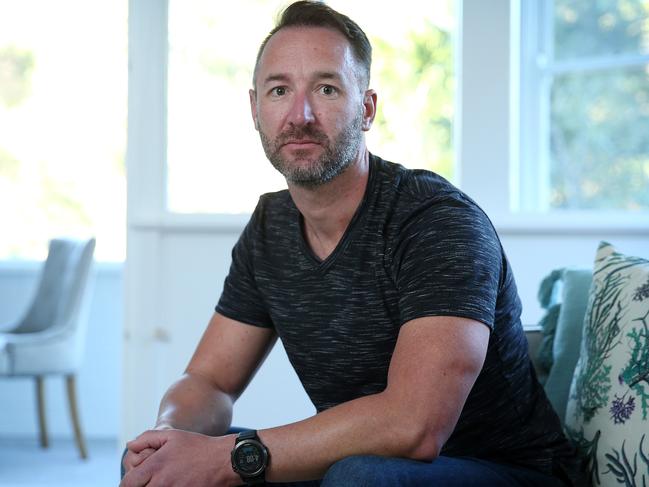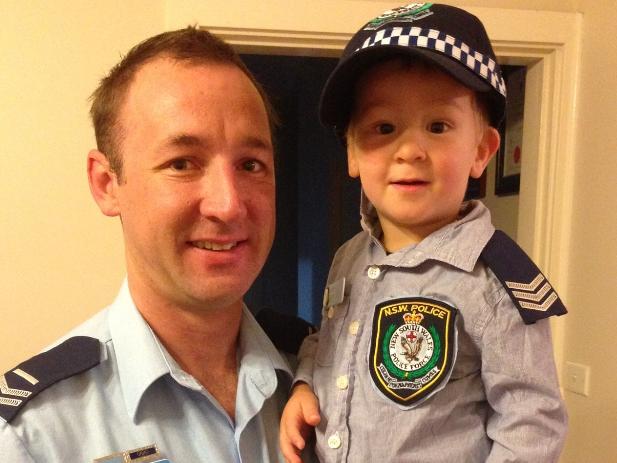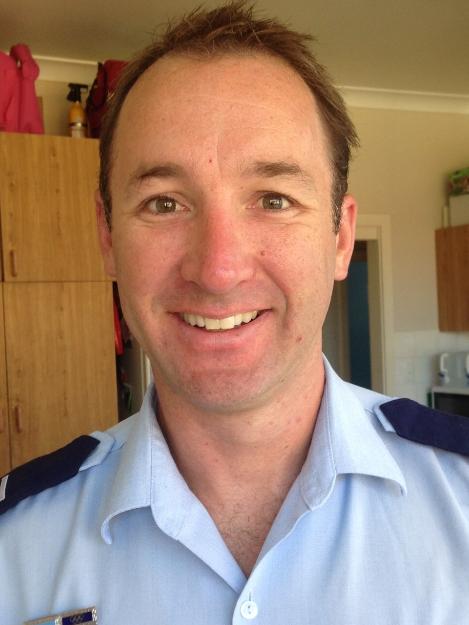A police officer’s battle with PTSD and what happened next
HE watched a woman die before his very eyes., but it wasn’t until some time later that Senior Constable Graham Smeallie succomed to PTSD, from which he recovered. It’s what he says the Force did to him next which plunged him back into his depression.
NSW
Don't miss out on the headlines from NSW. Followed categories will be added to My News.
THE call to police in the sleepy town of Narooma on the state’s far South Coast came on the night of March 10, 2014. A man wanted to report his wife missing.
Senior Constable Graham Smeallie was working on duty as the town lock-up keeper and while it may have been years ago he remembers it clearly.
He soon found the missing woman, lying on the ground surrounded by glass after she had smashed her way through a local newsagency window.
“I put my head in the hole (in the window) and I could hear someone moaning and groaning,” Mr Smeallie told The Sunday Telegraph.
“As I came around the shelf she was lying on the ground. She had been mutilated but she was still alive.”

MORE FROM AVA BENNY-MORRISON
MASS WEAPONS STOCKPILED IN GARDEN SHED
STANDOVER MAN WHO ‘RAN EASTERN SUBURBS’ BACK IN TROUBLE
In an ice-induced state the woman had stripped off her clothes and used shards of glass to cut herself. Her injuries were horrific.
Mr Smeallie stayed with her, telling her it would be OK even though he knew immediately there was nothing he could do to save her.
She died by his side and he was left with the task of informing her husband, who was at home with their two children.
The trauma of that night didn’t hit Mr Smeallie straight away.
When I was evicted, all the symptoms of PTSD came back
Rather, it caught up with him slowly, gnawing away all the time, bit by bit.
He became fixated on arresting the local dealer who sold her the drugs, worked himself to the point of exhaustion and ignored his mental wellbeing.
“I would think about what happened to her, what I saw, what she did to herself, what I had done or what I hadn’t done,” the 42-year-old said.
“The only person I could blame was myself. It just ate away at me every single day.”
As part of an intensive post-traumatic stress disorder treatment program at South Coast Private Hospital, he was forced to relive the trauma, from the smell of the blood to the sound of the woman’s voice, in painful and minute detail.
Over eight weeks, Mr Smeallie revisited the vivid memory with a psychologist again and again, essentially desensitising himself to the impact of the trauma.
“Kind of like learning to run long distance, it’s hard at first but the more you do the easier it gets,” he said.

A 22-year veteran of the force, Mr Smeallie already knew about PTSD and the devastating impact it can have on those on the front line.
Before Narooma, the father-of-two had worked the beat in Manly, the CBD and Mascot, receiving commendations for courage and a Commissioner’s Unit Citation, one of the highest accolades available, for his role in responding to the Cronulla riots.
Indeed, very early in his career he had felt the grip of PTSD and managed to come back.
“I always wanted to go back on the street because I loved what I did,” Mr Smeallie said.
“I basically recovered to the point where I could handle it again and I became more aware of what my triggers were for the PTSD, what I needed to do to look after myself and keep it under control.
:”I was a lot stronger and more resilient for having been through that and learned to manage PTSD by getting proper treatment.”
Dr Samuel Harvey from the Black Dog Institute said the prevalence of PTSD among emergency service workers was one in 10.
“It’s one of the messages we have been keen to get out there; as a police officer, you should be able to ask for help and get treatment,” Dr Harvey said.
“It doesn’t mean the end of your career.”

However, the trick was in identifying the symptoms early and seeking treatment.
Dr Harvey said it was common for emergency service workers to reflect on traumatic jobs after they happened but the problem arose when the situation turned chronic, when the thoughts and dreams didn’t subside.
Mr Smeallie is sharing his story because he wants all emergency service workers to know the condition can be managed with the right employer support — something he claims hasn’t always been properly offered to him.
Twelve months after finding the woman in the newsagency, Mr Smeallie had another call out which left a deeply traumatic scar.
He had to retrieve the body of a suicide victim while the man’s family watched on. It was the final psychological straw after a period when Mr Smeallie had let his mental wellbeing fall to the wayside.
He took time off in 2015 and returned in March 2016 on restricted duties.
He felt he had beat PTSD once and was confident he could do it again.
But later that year senior police told him that his family were being evicted from their Narooma home. Mr Smeallie had applied for six months annual and long service leave, which he would spend in Adelaide rehabilitating.
His Narooma house was part of the NSW Police Force portfolio and Mr Smeallie lived in it, with heavily reduced rent, as part of his role as a lockup keeper.
He was told he would have to move out of his house because the Child Abuse Squad wanted to make it a regional office

The property still remains empty but there are plans to renovate it into a police office.
It was too much for Mr Smeallie to deal with.
“On the 12th of October 2016 I got served with an eviction notice saying I had 90 days to be out of the house,” he said. “I had a belief in safety — that my home was a safe place and I was safe with the police and they would look after me.
“When I was evicted, all the symptoms of PTSD came back in addition to what I was feeling about the woman in the newsagency.”
His illness weighed heavily on his marriage, which broke down after Mr Smeallie left Narooma. He is now living at his parent’s house in Sydney, away from his family in South Australia, as he tries to find his feet and battle his illness.
He referred his treatment by the police to the Law Enforcement Conduct Commission, which directed the NSW Police Force earlier this month to investigate Mr Smeallie’s complaint.
A spokesman for NSW Police said a nondisclosure agreement prohibited the organisation from commenting on the case.
It is understood Mr Smeallie went through the Industrial Relations Commission and was compensated for being evicted from the police house.
“I am after making real change with how the police look at PTSD. Just because someone has PTSD, it is not a death sentence for them, they are not used goods,” he said.
“You have to make sure you can keep an eye out, it’s not just one big incident it can be a lot of little incidents. It’s about looking after yourself to make sure you can make it through your whole career.”

